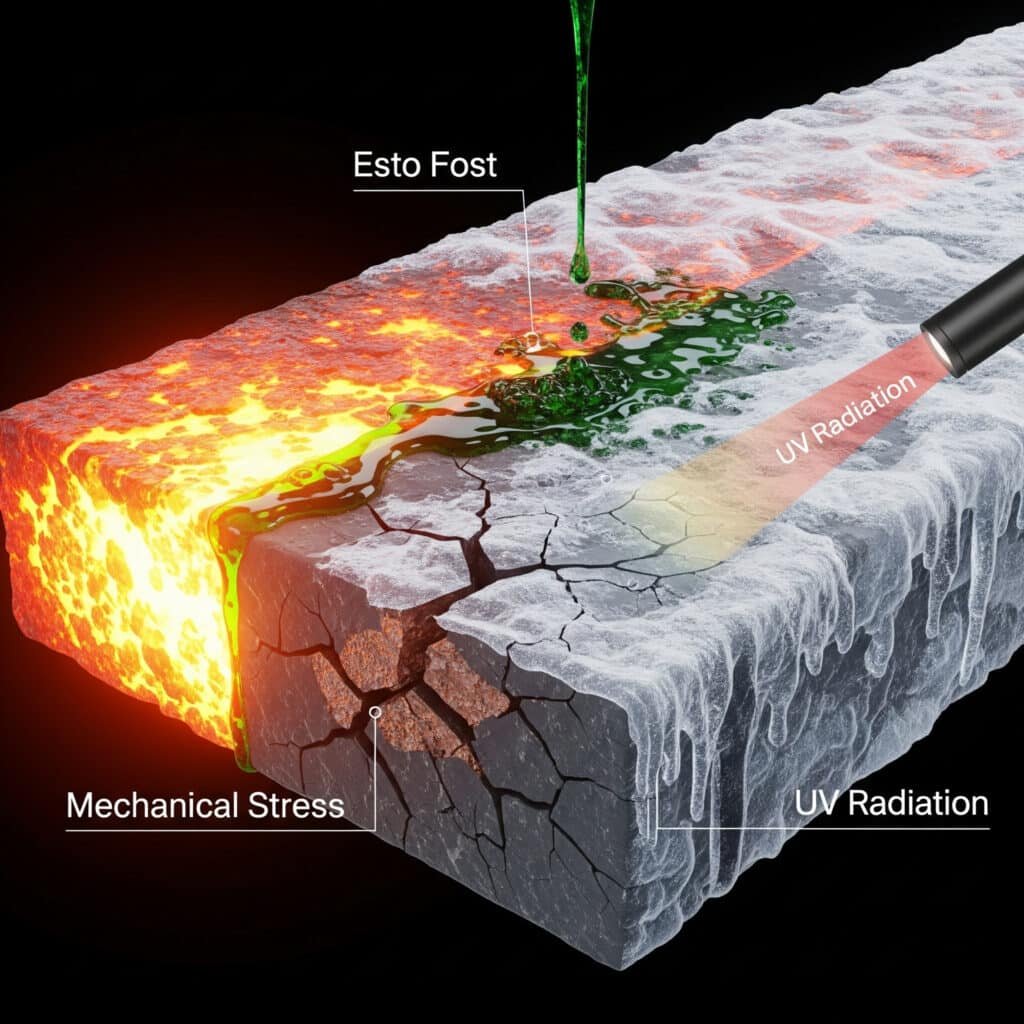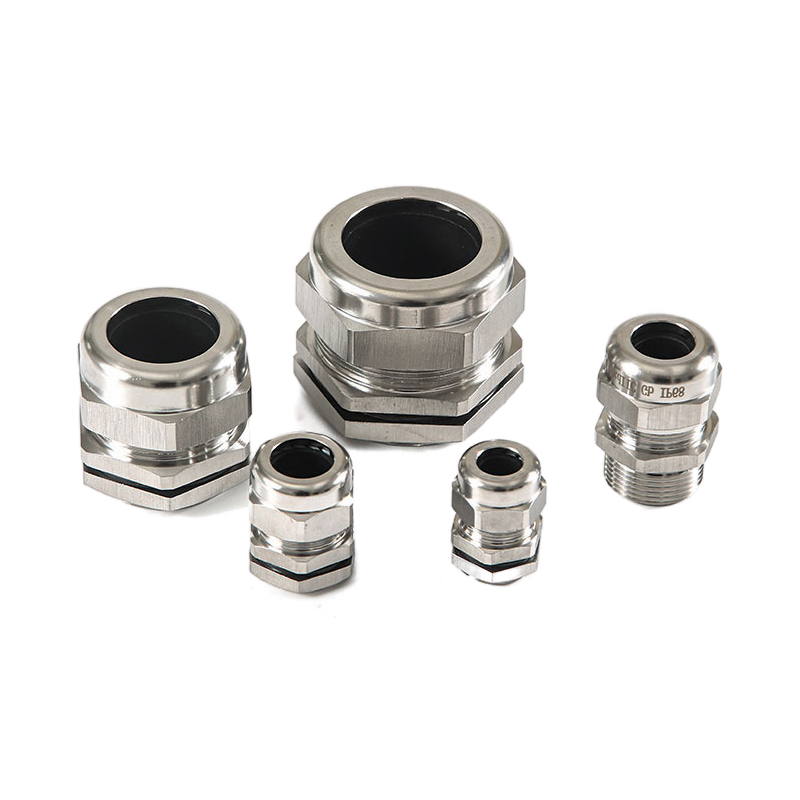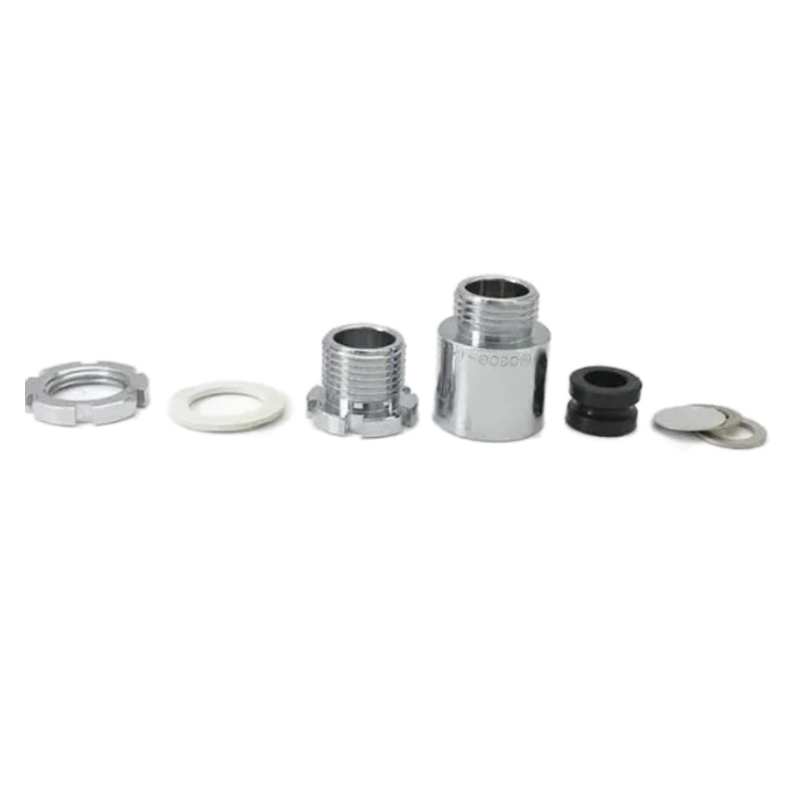Wrong material selection leads to premature failure, safety hazards, and costly replacements. Environmental factors destroy unsuitable materials within months.
Cable gland material selection depends on environmental conditions, chemical exposure, temperature range, and mechanical stress. Choose nylon for general use, brass for durability, and stainless steel for corrosive environments.
Last month, Hassan’s petrochemical plant faced a critical shutdown when their standard brass cable glands corroded in just six months, costing $50,000 in emergency repairs.
Table of Contents
- What Are the Key Material Options for Cable Glands?
- How Do Environmental Conditions Affect Material Selection?
- Which Materials Offer the Best Chemical Resistance?
- What Are the Cost vs Performance Trade-offs for Different Materials?
What Are the Key Material Options for Cable Glands?
Understanding material properties prevents costly failures and ensures optimal performance for your specific application.
Primary cable gland materials include nylon (PA66), brass (CuZn39Pb3), stainless steel (316L), and aluminum. Each offers distinct advantages in strength, corrosion resistance, temperature tolerance, and cost-effectiveness.
Nylon Cable Glands (PA66)
Our most popular general-purpose option offers:
Key Properties
- Temperature range: -40°C to +100°C (short-term +120°C)
- Chemical resistance: Excellent against oils, fuels, and most solvents
- UV resistance: UV-stabilized grades available
- Flame rating: UL94 V-21 standard
- Cost: Most economical option
Typical Applications
- Control panels: Indoor electrical enclosures
- Machinery: General industrial equipment
- Automotive: Under-hood applications
- HVAC systems: Climate control equipment
David’s production line uses our PA66 nylon glands for control panel connections. After three years of continuous operation, they show no signs of degradation despite daily temperature cycling.
Brass Cable Glands (CuZn39Pb3)
Traditional choice for demanding applications:
Material Advantages
- Mechanical strength: Superior to nylon
- Temperature range: -20°C to +120°C
- Electrical conductivity: Excellent EMC performance
- Machinability: Precise thread cutting
- Durability: 10+ year service life
Surface Treatment Options
- Nickel plating2: Enhanced corrosion protection
- Chrome plating: Superior wear resistance
- Natural brass: Cost-effective standard finish
Stainless Steel Cable Glands (316L)
Premium choice for harsh environments:
Superior Properties
- Corrosion resistance: Excellent in marine and chemical environments
- Temperature range: -40°C to +200°C
- Mechanical strength: Highest available
- Hygiene compliance: Food and pharmaceutical grade
- Longevity: 15+ year service life
Grade Variations
- 304 Stainless: General corrosion resistance
- 316L Stainless: Superior chloride resistance
- Super Duplex3: Extreme chemical resistance
Specialized Materials
For extreme applications, we offer:
Aluminum Alloy
- Weight: 60% lighter than brass
- Corrosion: Anodized surface protection
- Applications: Aerospace and transportation
Engineering Plastics
- PEEK: High-temperature chemical resistance
- PPS: Automotive under-hood applications
- PTFE: Ultimate chemical inertness
How Do Environmental Conditions Affect Material Selection?
Environmental assessment determines material suitability and prevents premature failure in your specific conditions.
Temperature extremes, humidity, chemical exposure, UV radiation, and mechanical stress directly impact material performance. Analyze your worst-case conditions to select materials with appropriate safety margins.

Temperature Considerations
High-Temperature Applications
For applications above 80°C:
- Brass: Suitable up to 120°C
- Stainless steel: Handles up to 200°C
- Avoid nylon: Softens above 100°C
Low-Temperature Performance
Cold weather challenges:
- Nylon: Becomes brittle below -20°C
- Brass: Maintains properties to -40°C
- Stainless steel: Best low-temperature performance
Humidity and Moisture Exposure
Indoor Applications (RH <60%)
- Nylon: Excellent choice
- Brass: Standard finish acceptable
- Cost optimization: Nylon preferred
Outdoor Applications (RH >80%)
- Stainless steel: Best long-term performance
- Brass: Requires protective coating
- Nylon: UV-stabilized grades only
Hassan’s coastal refinery experiences 95% humidity and salt spray. We recommended 316L stainless steel glands, which have performed flawlessly for four years without any corrosion signs.
Chemical Environment Assessment
Mild Chemical Exposure
Common industrial chemicals:
- Hydraulic oils: Nylon or brass suitable
- Cutting fluids: Brass recommended
- General solvents: Check compatibility charts
Aggressive Chemical Environments
Harsh chemical exposure requires:
- Acids: 316L stainless steel minimum
- Caustics: Specialized alloys may be needed
- Solvents: PTFE-lined options available
UV and Weather Exposure
Indoor Applications
- Standard nylon: Adequate protection
- Natural brass: No UV concerns
- Cost-effective: Basic materials sufficient
Outdoor Installations
- UV-stabilized nylon: Carbon black additive
- Anodized aluminum: Excellent UV resistance
- Stainless steel: No UV degradation
Mechanical Stress Factors
Vibration Resistance
High-vibration environments need:
- Metal construction: Brass or stainless steel
- Proper installation: Strain relief essential
- Regular inspection: Monitor for loosening
Impact Resistance
Applications with potential impact:
- Nylon: Good impact absorption
- Avoid brittle materials: At low temperatures
- Protective covers: Consider additional protection
Which Materials Offer the Best Chemical Resistance?
Chemical compatibility prevents dangerous failures and ensures safe operation in process industries.
Stainless steel 316L provides excellent resistance to acids and chlorides, while specialized plastics like PTFE offer universal chemical compatibility. Always verify specific chemical compatibility before selection.
Chemical Resistance Comparison
| Chemical Type | Nylon (PA66) | Brass | 316L SS | PTFE |
|---|---|---|---|---|
| Acids (dilute) | Poor | Fair | Excellent | Excellent |
| Acids (concentrated) | Poor | Poor | Good | Excellent |
| Caustics | Fair | Poor | Good | Excellent |
| Solvents | Good | Fair | Excellent | Excellent |
| Oils/Fuels | Excellent | Good | Excellent | Excellent |
| Salt Water | Good | Poor | Excellent | Excellent |
Specific Chemical Challenges
Petroleum Industry
Common chemicals and recommended materials:
- Crude oil: Nylon or stainless steel
- Refined products: Brass or stainless steel
- H2S environments: 316L stainless minimum
- Seawater injection: Super duplex stainless
Chemical Processing
Aggressive environments require:
- Concentrated acids: PTFE-lined glands
- Caustic solutions: Hastelloy or Inconel
- Mixed chemicals: Universal resistance materials
- High purity: Electropolished stainless steel
Material Degradation Mechanisms
Stress Corrosion Cracking4
Prevention strategies:
- Material selection: Appropriate alloy grades
- Stress relief: Proper installation techniques
- Environmental control: Minimize chloride exposure
Galvanic Corrosion5
When mixing materials:
- Compatibility: Use galvanic series charts
- Isolation: Insulating washers or coatings
- Sacrificial protection: Zinc anodes where applicable
David’s food processing plant switched from brass to 316L stainless steel glands after sanitizing chemicals caused premature corrosion. The upgrade eliminated monthly replacements and improved food safety compliance.
Testing and Verification
Laboratory Testing
We conduct comprehensive testing:
- Immersion tests: Long-term chemical exposure
- Stress testing: Combined mechanical and chemical stress
- Accelerated aging: Elevated temperature exposure
- Compatibility verification: Customer-specific chemicals
Field Performance Monitoring
Real-world validation includes:
- Installation documentation: Baseline conditions
- Regular inspections: Visual and dimensional checks
- Performance tracking: Service life data
- Failure analysis: Root cause investigation
Chemical Compatibility Resources
Reference Materials
Essential resources include:
- Compatibility charts: Material vs. chemical matrices
- Technical data sheets: Detailed specifications
- Application guides: Industry-specific recommendations
- Expert consultation: Direct engineering support
What Are the Cost vs Performance Trade-offs for Different Materials?
Understanding total cost of ownership helps optimize material selection for maximum value over the product lifecycle.
Initial material cost represents only 20-30% of total ownership cost. Factor in installation, maintenance, replacement frequency, and downtime costs when comparing materials for optimal value.
Total Cost of Ownership Analysis
Initial Purchase Cost Comparison
Relative pricing (Nylon = 1.0):
- Nylon (PA66): 1.0x baseline cost
- Brass: 2.5-3.0x nylon cost
- Stainless Steel 316L: 4.0-5.0x nylon cost
- Specialized alloys: 8.0-15.0x nylon cost
Service Life Expectations
Typical replacement intervals:
- Nylon: 3-5 years (indoor), 2-3 years (outdoor)
- Brass: 8-12 years with proper maintenance
- Stainless steel: 15-20 years in most environments
- Specialized materials: 20+ years in extreme conditions
Hidden Cost Factors
Installation Costs
Material-specific considerations:
- Nylon: Lightweight, easy handling
- Brass: Standard tools, moderate weight
- Stainless steel: Heavy-duty tools, higher labor
- Thread compounds: Material-specific requirements
Maintenance Requirements
Ongoing service needs:
- Nylon: Minimal maintenance, UV inspection
- Brass: Periodic corrosion checks
- Stainless steel: Minimal maintenance required
- Gasket replacement: Material compatibility critical
Hassan’s refinery analysis showed that while stainless steel glands cost 5x more initially, they delivered 60% lower total cost over 10 years due to eliminated replacements and reduced maintenance. 😉
Performance Value Metrics
Reliability Factors
Key performance indicators:
- Mean time between failures: Service life data
- Failure mode analysis: Predictable vs. random failures
- Safety implications: Consequence of failure
- Availability requirements: Uptime criticality
Environmental Performance
Sustainability considerations:
- Material recyclability: End-of-life disposal
- Manufacturing impact: Carbon footprint
- Transportation: Weight and packaging efficiency
- Lifecycle assessment: Cradle-to-grave analysis
Cost Optimization Strategies
Application Segmentation
Optimize by criticality:
- Critical applications: Premium materials justified
- Standard applications: Balanced cost/performance
- Non-critical applications: Cost-optimized selection
- Standardization benefits: Inventory reduction
Volume Considerations
Quantity impacts:
- Large quantities: Material cost becomes dominant
- Small quantities: Labor cost more significant
- Mixed orders: Standardization advantages
- Long-term agreements: Price stability benefits
ROI Calculation Framework
Cost Components
Include all factors:
- Initial purchase: Material and shipping costs
- Installation: Labor and tool requirements
- Operation: Energy and monitoring costs
- Maintenance: Inspection and service costs
- Replacement: Future material and labor costs
- Downtime: Production loss valuation
Payback Analysis
David’s manufacturing plant calculated 18-month payback when upgrading from nylon to brass glands in high-vibration applications, despite 3x higher initial cost.
Decision Matrix Approach
Weighted Scoring
Factor importance weighting:
- Cost: 25% weight
- Reliability: 30% weight
- Environmental suitability: 25% weight
- Maintenance requirements: 20% weight
Sensitivity Analysis
Test assumptions:
- Service life variations: Impact on ROI
- Cost escalation: Future price changes
- Performance degradation: Aging effects
- Technology changes: Alternative solutions
Conclusion
Successful cable gland material selection requires balancing initial cost, environmental suitability, chemical compatibility, and total ownership costs for optimal long-term value.
FAQs About Cable Gland Materials
Q: What’s the best material for outdoor applications with temperature cycling?
A: Stainless steel 316L offers the best performance for outdoor temperature cycling, providing excellent corrosion resistance and thermal stability from -40°C to +200°C without degradation.
Q: Can nylon cable glands handle petroleum products?
A: Yes, PA66 nylon provides excellent resistance to oils, fuels, and most petroleum products. However, verify compatibility with specific chemicals and consider temperature limits.
Q: How do I know if brass cable glands need protective coating?
A: Brass requires protective coating in marine environments, high humidity (>80% RH), or chemical exposure. Natural brass is suitable for dry, indoor applications only.
Q: What’s the cost difference between 304 and 316L stainless steel?
A: 316L stainless steel costs approximately 20-30% more than 304, but provides superior chloride resistance essential for marine and chemical applications.
Q: How long do different cable gland materials typically last?
A: Service life varies by environment: nylon 3-5 years, brass 8-12 years, stainless steel 15-20 years. Harsh conditions reduce these timeframes significantly.
-
Review the UL 94 standard for plastics flammability and understand what the V-2 rating signifies. ↩
-
Explore the process of electroplating nickel onto metal parts to improve corrosion and wear resistance. ↩
-
Learn about the properties and applications of Super Duplex stainless steels and their superior corrosion resistance. ↩
-
Understand the mechanism of Stress Corrosion Cracking (SCC) and the conditions that cause it in metals. ↩
-
See a guide on how Galvanic Corrosion occurs between dissimilar metals and learn methods to prevent it. ↩





